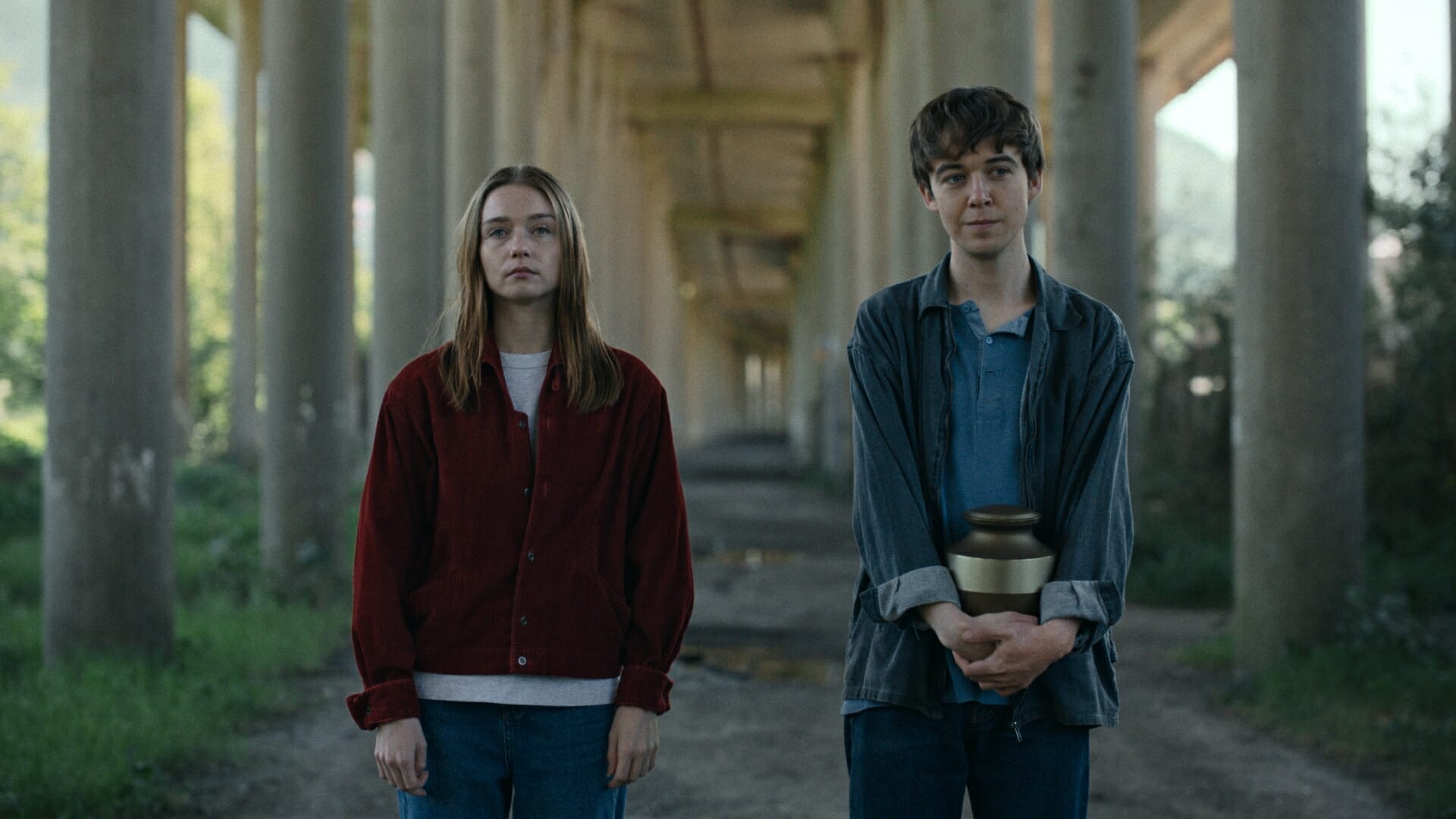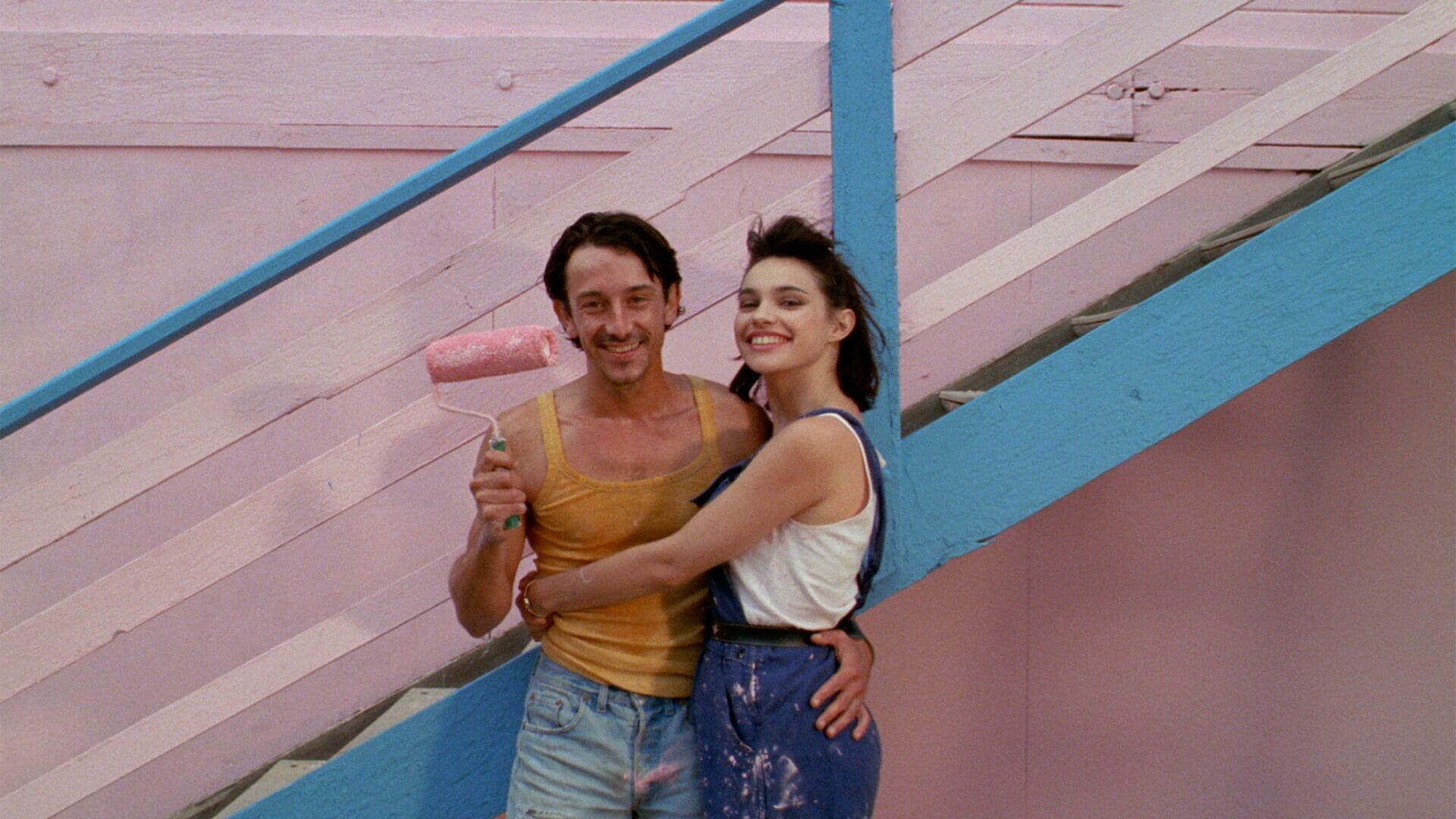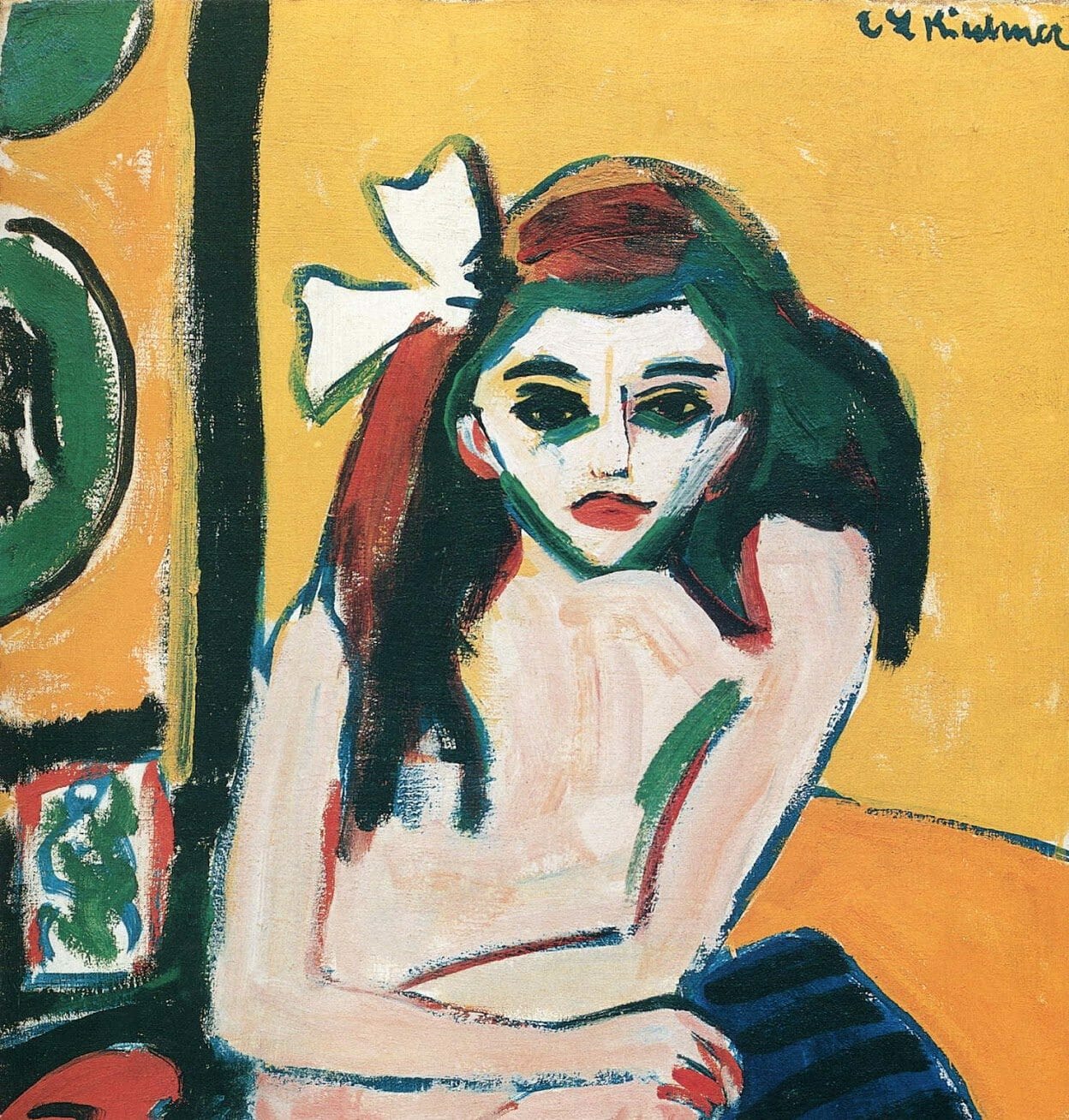
Marzella | The passage from childhood to puberty
Artist
Year
Country
Format
Location of the visited exhibition
Material/Technique
Dimensions
Born in 1880, the German artist Ernst Ludwig Kirchner was one of the founders of Die Brücke (The Bridge), a group of German expressionist artists. At the same time as the French movement dubbed Les Fauves – ‘the Beasts’ – these German avant-garde artists aimed to act as a bridge, a passage, between the old and the new, thus between German neo-romantic painting and modern expressionist painting. Between 1909 and 1910, Kirchner painted Marzella. And as the Die Brücke, this oeuvre represents a passage: from childhood to Puberty. A little girl’s body transforming into that of a woman.
Sensuality and innocence
The girl Marzella, who gives the work its name, had also been a model for the artist in other works such as Female Artist. In this artwork, she’s naked, sitting on a bed. Her heavy and sensual make-up – dark eyeliner and red lipstick – contrasts with the childhood innocence of her skinny body and the white ribbon. Marzella is like Vladimir Nabokov’s Lolita. And she looks at the viewer, breaking down the fourth wall like Phoebe Waller-Bridge’s character in TV Shows Fleabag.

Die Brücke in contrasts with the Fauves
The goal of the Die Brücke artists was to denounce the hypocrisy of the society in which they lived. For this, Kirchner wanted to weave social commentary into Marzella.
They used violent and acid colors and disharmonious figures, surrounded by black or strong chromatic contrasts. The movement wanted to engage as many people as possible. Woodcuts were often used, a technique that allowed artists to reach a wider audience.
Die Brücke contrasts itself with the optimism of the French expressionists, Les Fauves. Their works do not address political or social issues. The artists of this movement describe things as they feel them, and not as they see them. Enveloped in the optimism that invaded Paris in the early 1900s, they try to convey positive feelings. In their works, there is no volume and no perspective, but there are sharp lines, and bright, unnatural colors. Pure color, spread with flat brushstrokes.
The reference to Puberty
In this oeuvre, the German artist refers to Edvard Munch‘s Puberty (1895).
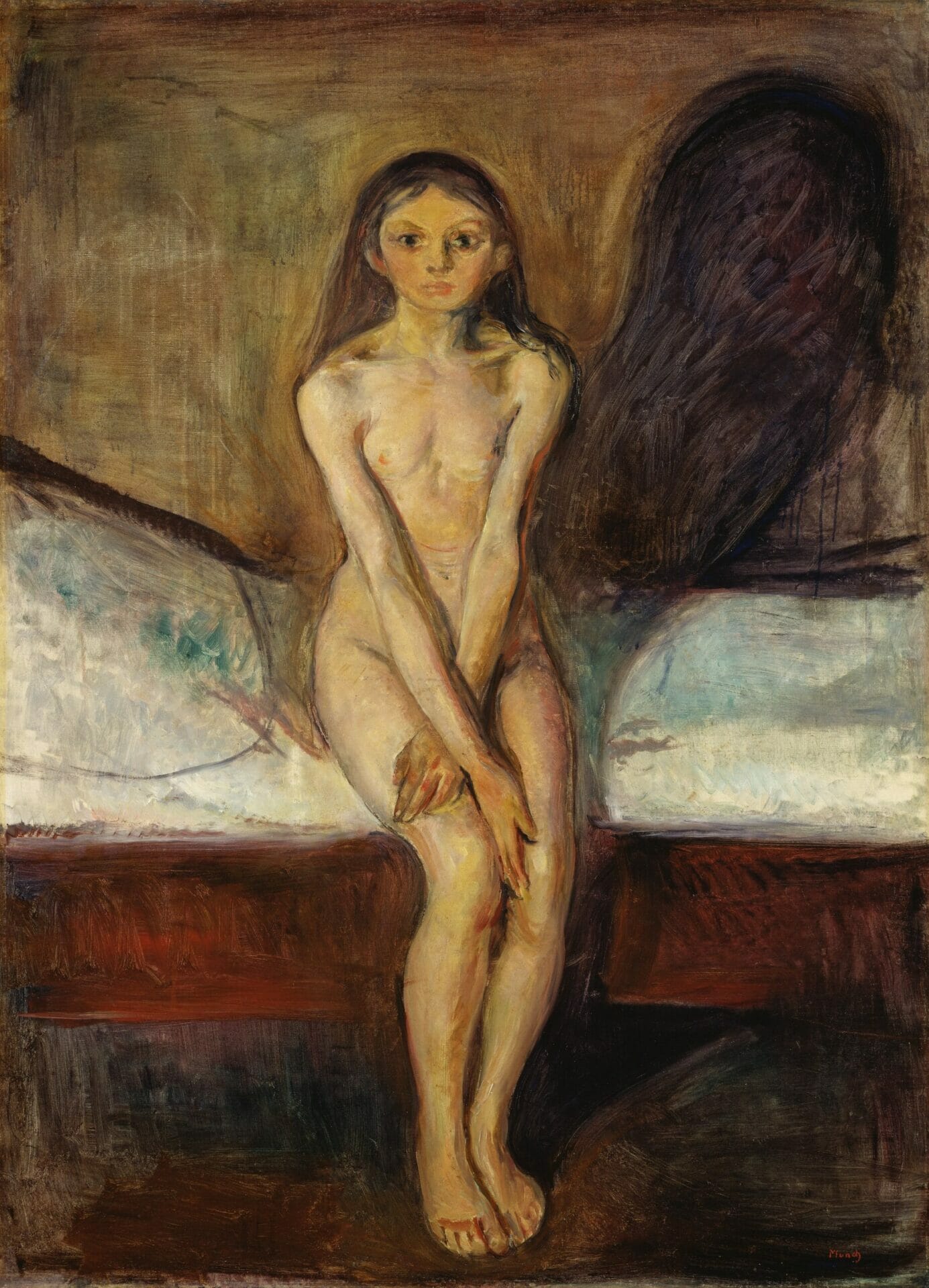
Unlike Marzella, the girl in the Norwegian painter’s canvas does not show confidence and seems to hide fears for what her future will be. Despite the fact that her gaze is turned towards the viewer, it is as if it is going beyond, absorbed in thoughts and concerns. To make the work of Munch even darker are the colors he used, which reflect the state of mind of the young woman. Munch’s colors are more gloomy and reflect the state of mind of the young woman. The girls’ gestures recall that of Eve and Adam after committing the original sin in the book of Genesis. The scene is taken from Masaccio‘s famous fresco Expulsion from Paradise.
The Florentine artist shows the two biblical characters while covering their faces and groins, as they have just assumed the awareness of being naked. After eating apples from the Knowledge Tree of good and evil, shame and prudery become characteristics that differentiate humans from animals. In fact, according to Christianity, these emotions did not exist before that, just as they did for young women before puberty.
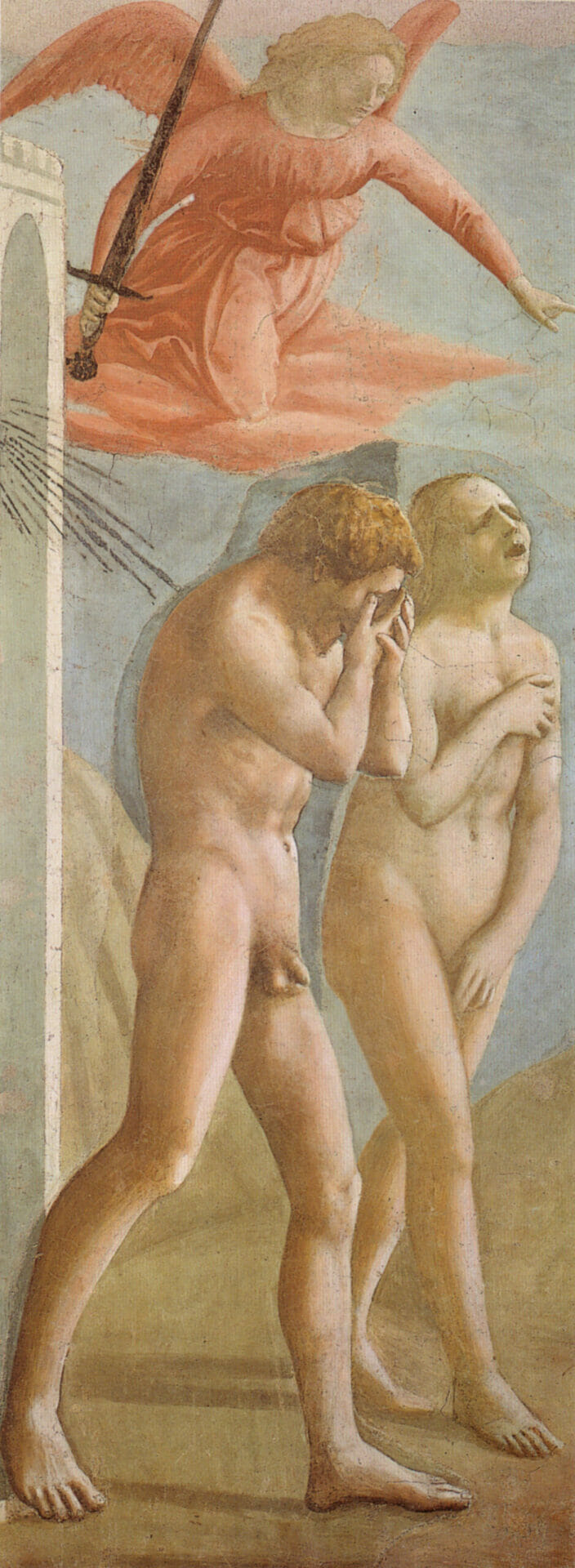
Breaking taboos
The passage from childhood to puberty has always been considered as an element of shame.
But in the 21st century, TV shows such as Big Mouth had a different approach to this delicate theme. The teenage protagonists face all difficult phases of adolescence. From the appearance of pubic hair to the first menstrual cycle to the discovery of sexuality. In this show, hormones become monsters, and shame is a mean wizard.
This way, Big Mouth shows puberty with lightness and comedy, taking a step in a different direction if compared to the painting Marzella.
Tag
Buy a ☕ for Hypercritic








